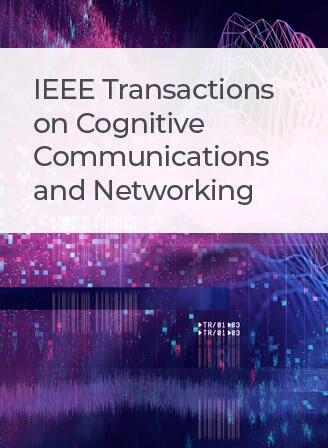DSIL: An Effective Spectrum Prediction Framework Against Spectrum Concept Drift
IF 7.4
1区 计算机科学
Q1 TELECOMMUNICATIONS
IEEE Transactions on Cognitive Communications and Networking
Pub Date : 2024-01-18
DOI:10.1109/TCCN.2024.3355430
引用次数: 0
Abstract
Predicting spectrum plays an importance role in cognitive networks, which is the key to address the issue of spectrum scarcity. Deep learning methods for spectrum prediction have attracted significant interests because of the exceptional accuracy. However, when dealing with radio frequency (RF) measurements from real data traffic, the precise distribution of the measurements is often unknown, making model mismatch an inevitable occurrence. This is known as spectrum concept drift, which presents a formidable obstacle for traditional deep learning adapt to the dynamic spectrum environment. Considering spectrum concept drift, we proposed Deep Spectrum Incremental Learning (DSIL) method, a two stage framework including Concept Drift Detection module and Adaptive Spectrum Prediction module. In the first stage, we analysis concept drift detector mechanism and propose an effective spectrum concept drift method by leveraging Hoeffding drift detection method with averaging (HDDM-A). In the second stage, we propose Spectrum Incremental Learning Triple Net (SILTN) for spectrum incremental learning. SILTN, consisted of Multilayer Perceptron (MLP), ConvGRU and ConvLSTM, can effectively extract spectrum spatial and temporal features, and thus, improve spectrum prediction performance. Lastly, we introduce an Adaptive Spectrum Prediction Training (ASPT) method, designed to help SILTN achieve a better balance between past spectrum prediction tasks and incoming spectrum prediction tasks after finetune. The experimental results demonstrate that the DSIL framework can effectively address the issue of concept drift in common deep learning models for spectrum prediction. To the best of our knowledge, this is the first work considering spectrum concept drift detection and corresponding solution.DSIL:应对频谱概念漂移的有效频谱预测框架
频谱预测在认知网络中发挥着重要作用,是解决频谱稀缺问题的关键。用于频谱预测的深度学习方法因其卓越的准确性而备受关注。然而,在处理来自真实数据流量的射频(RF)测量值时,测量值的精确分布往往是未知的,这就不可避免地会出现模型不匹配的情况。这就是所谓的频谱概念漂移,它给传统深度学习适应动态频谱环境带来了巨大障碍。考虑到频谱概念漂移,我们提出了深度频谱增量学习(DSIL)方法,这是一个两阶段框架,包括概念漂移检测模块和自适应频谱预测模块。在第一阶段,我们分析了概念漂移检测机制,并利用带平均值的霍夫丁漂移检测方法(HDDM-A)提出了一种有效的频谱概念漂移方法。第二阶段,我们提出了用于频谱增量学习的频谱增量学习三重网(SILTN)。SILTN 由多层感知器 (MLP)、ConvGRU 和 ConvLSTM 组成,能有效提取频谱的空间和时间特征,从而提高频谱预测性能。最后,我们引入了自适应频谱预测训练(ASPT)方法,旨在帮助 SILTN 在微调后更好地平衡过去的频谱预测任务和即将到来的频谱预测任务。实验结果表明,DSIL 框架能有效解决常见频谱预测深度学习模型中的概念漂移问题。据我们所知,这是第一项考虑频谱概念漂移检测和相应解决方案的工作。
本文章由计算机程序翻译,如有差异,请以英文原文为准。
求助全文
约1分钟内获得全文
求助全文
来源期刊

IEEE Transactions on Cognitive Communications and Networking
Computer Science-Artificial Intelligence
CiteScore
15.50
自引率
7.00%
发文量
108
期刊介绍:
The IEEE Transactions on Cognitive Communications and Networking (TCCN) aims to publish high-quality manuscripts that push the boundaries of cognitive communications and networking research. Cognitive, in this context, refers to the application of perception, learning, reasoning, memory, and adaptive approaches in communication system design. The transactions welcome submissions that explore various aspects of cognitive communications and networks, focusing on innovative and holistic approaches to complex system design. Key topics covered include architecture, protocols, cross-layer design, and cognition cycle design for cognitive networks. Additionally, research on machine learning, artificial intelligence, end-to-end and distributed intelligence, software-defined networking, cognitive radios, spectrum sharing, and security and privacy issues in cognitive networks are of interest. The publication also encourages papers addressing novel services and applications enabled by these cognitive concepts.
 求助内容:
求助内容: 应助结果提醒方式:
应助结果提醒方式:


